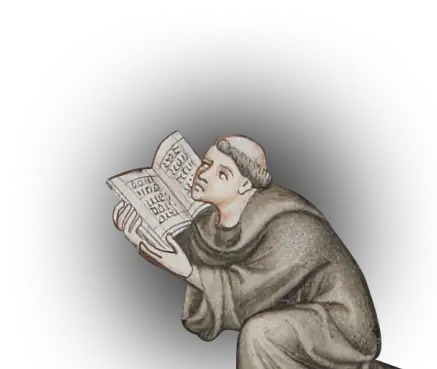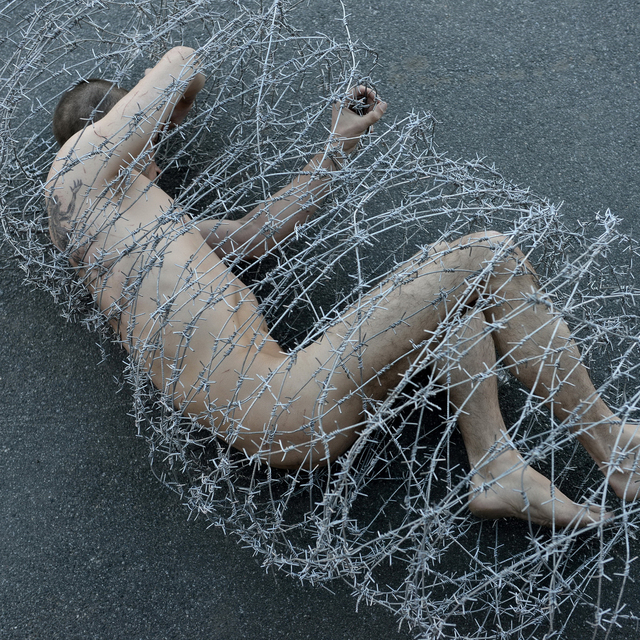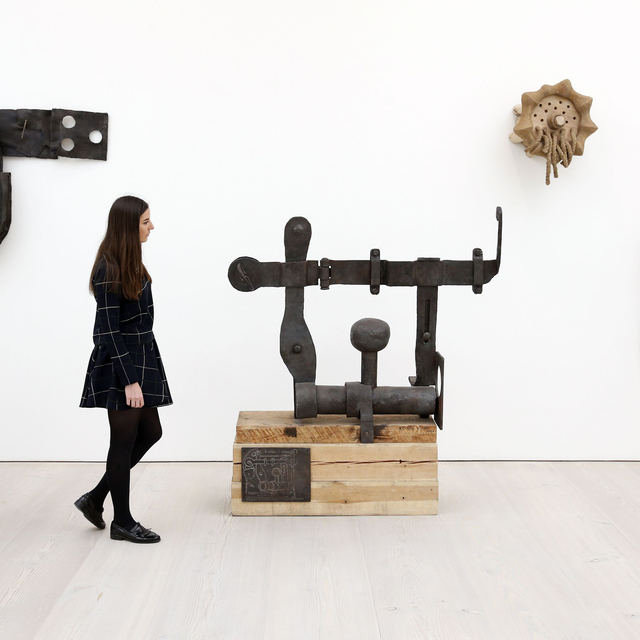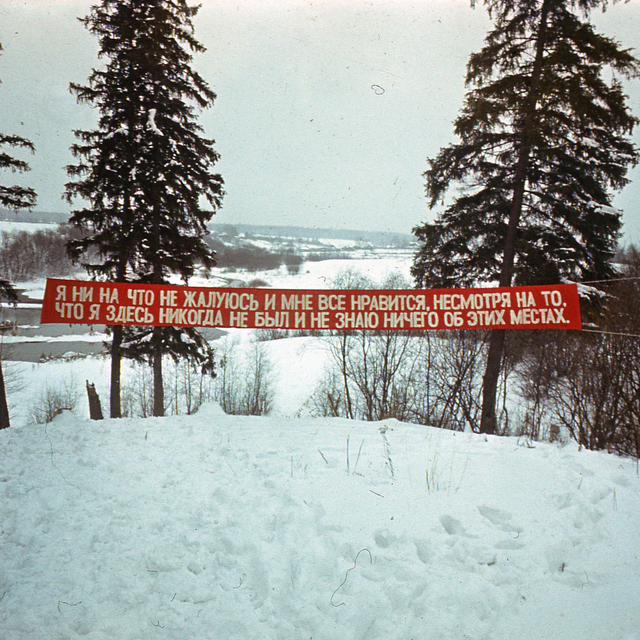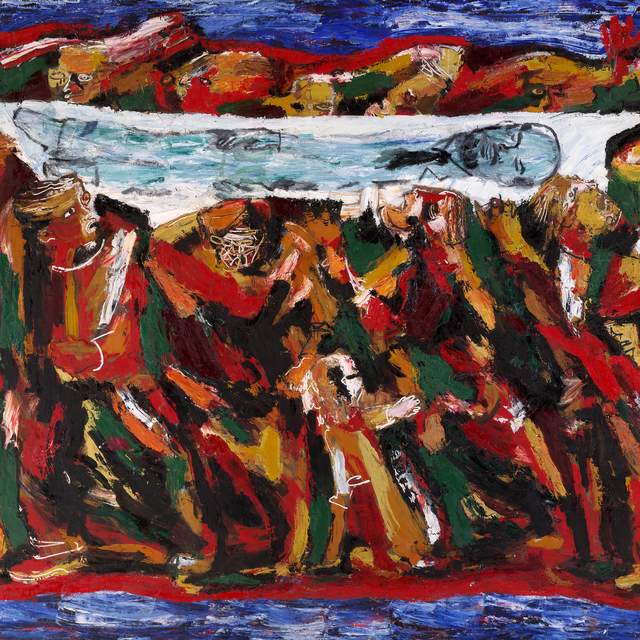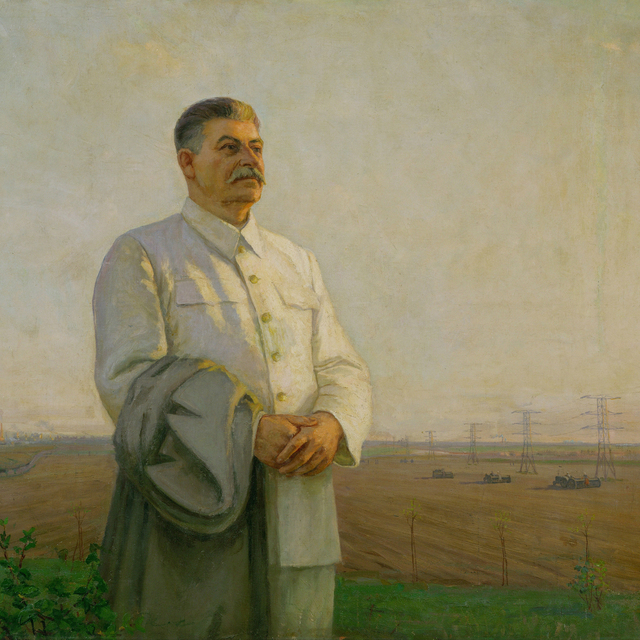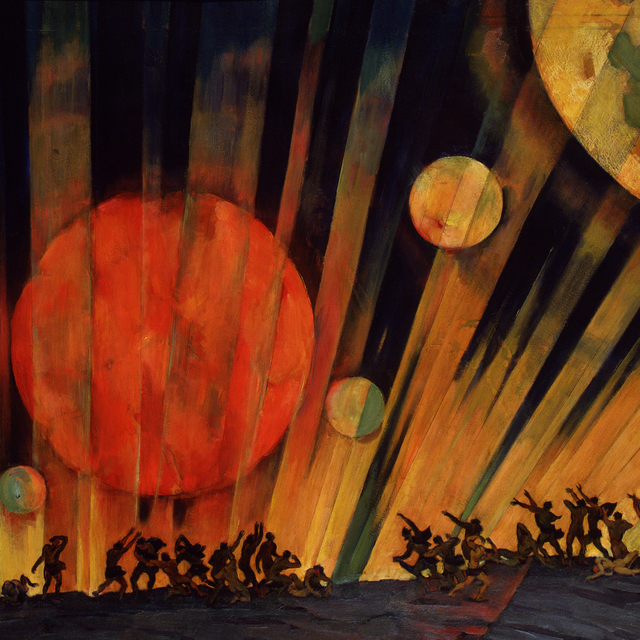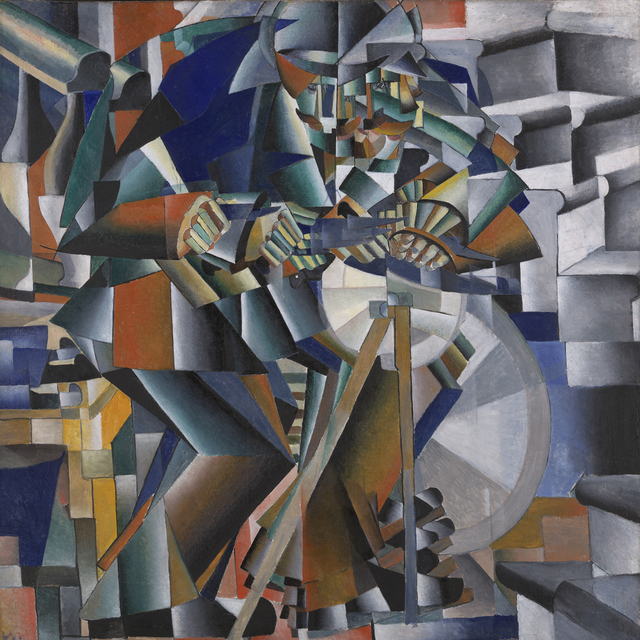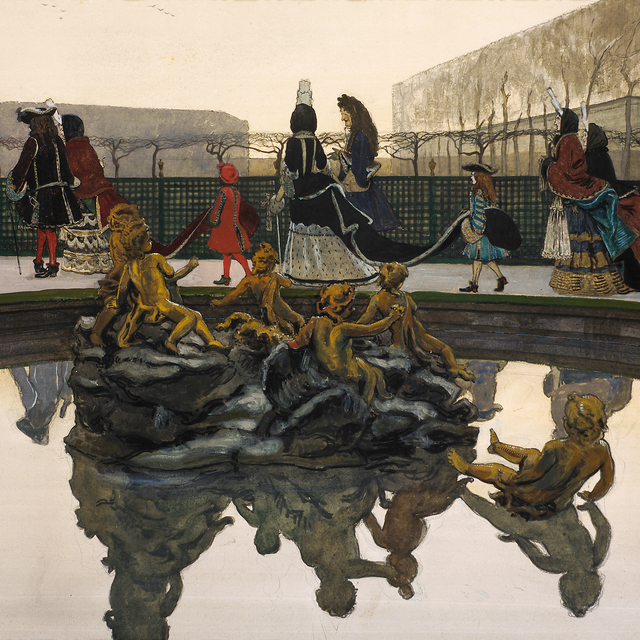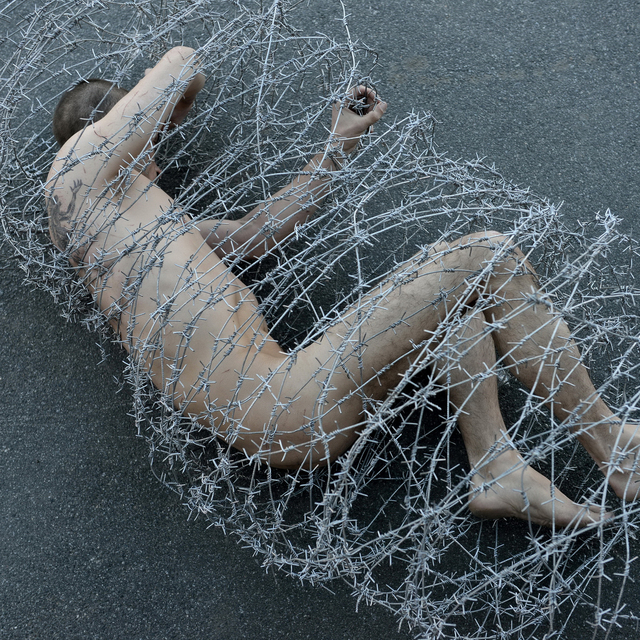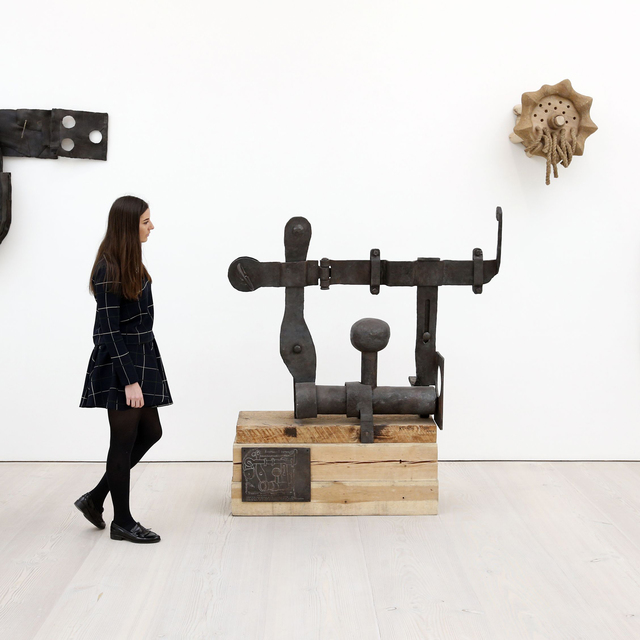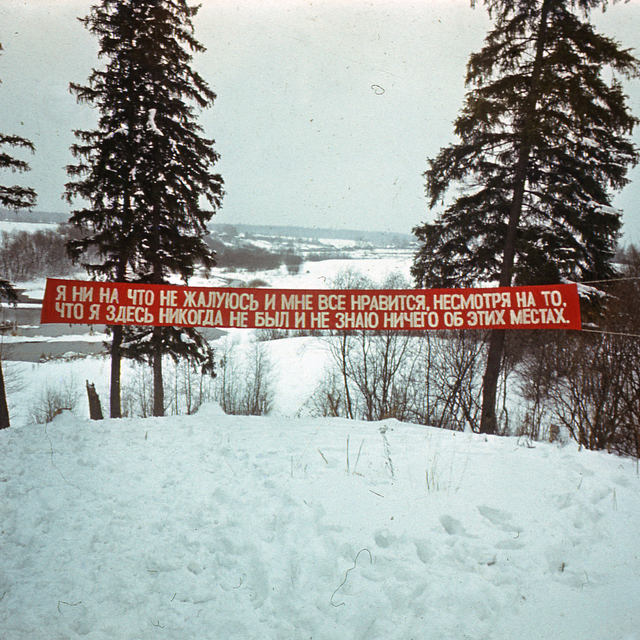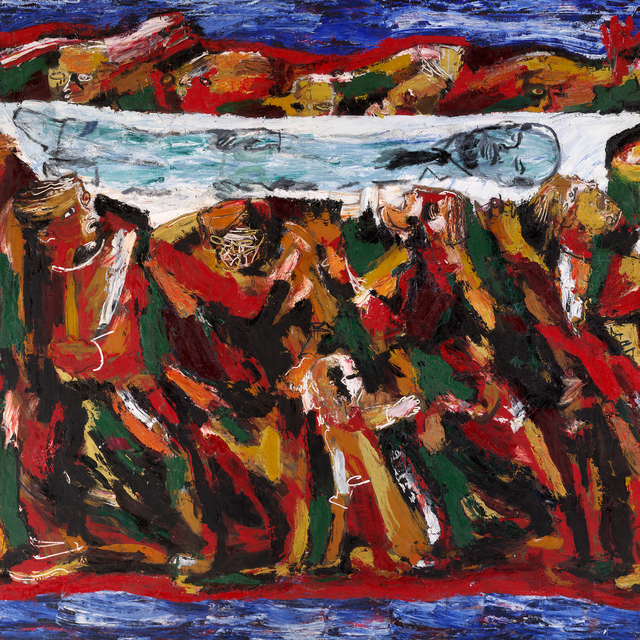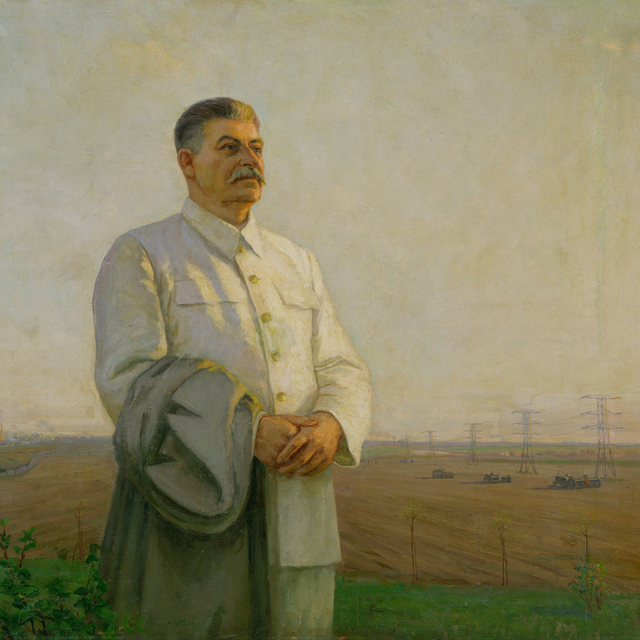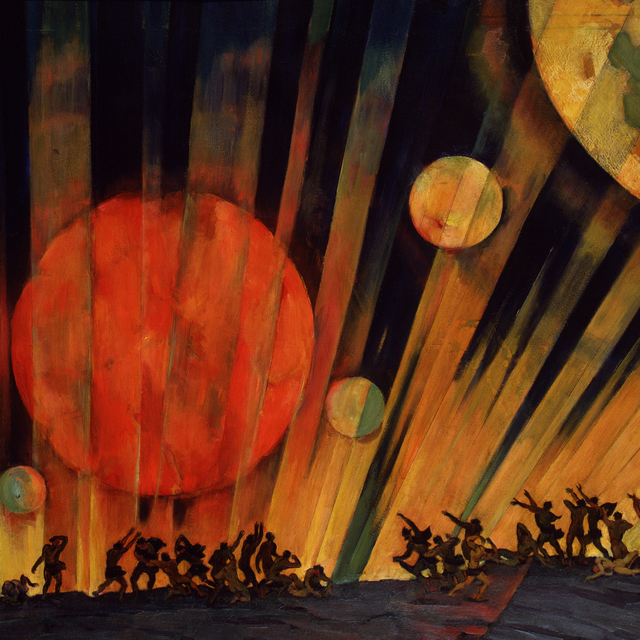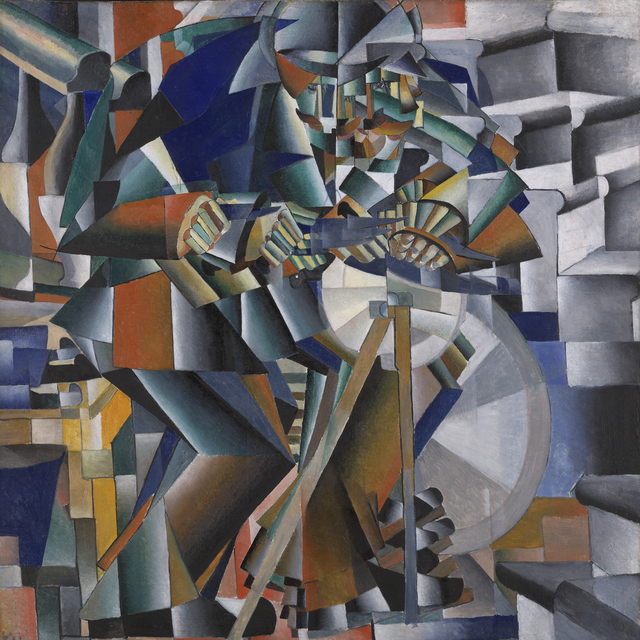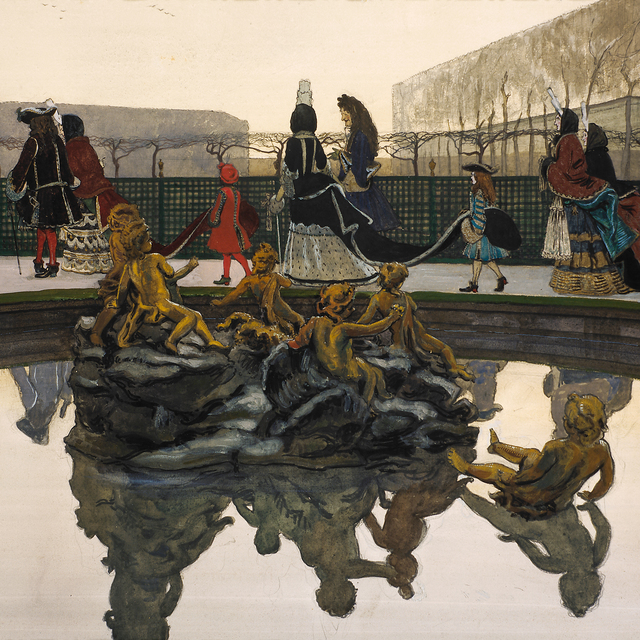Socialist Realism
The well-known Stalin-era film Circus (1936) ends with footage of a parade, as radiant people wearing white walk past, singing the Song of the Motherland. In 1937, a year after the film came out, the same image was replicated in Alexander Deyneka’s monumental panel The Stakhanovites – except that the black child sitting on the shoulder of one of the marching men was replaced with a white child on the shoulder of a Stakhanovite woman. Later, the same composition would be used in the gigantic painting Distinguished People of the Land of the Soviets, painted by a whole brigade of artists under the leadership of Vasily Yefanov. It was a collective portrait that brought together heroes of labour, polar explorers, flying aces, Central Asian bards, and actors. This genre of glorification exemplifies the artistic style that had practically monopolised Soviet art for more than twenty years. This was Socialist Realism, or the “Stalin-style”, as critic Boris Groys once called it.
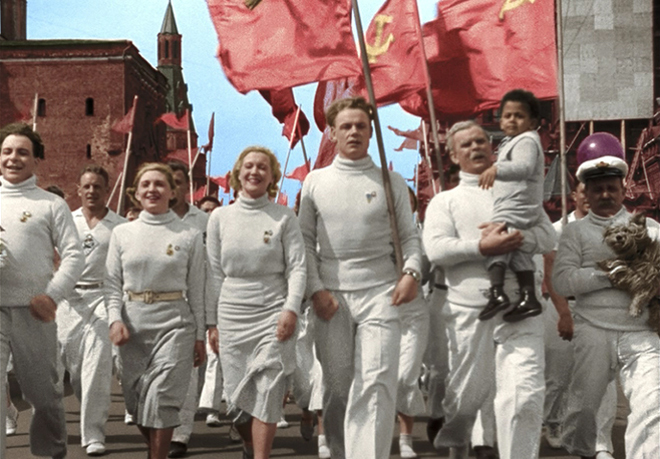
Socialist Realism became an official term in 1934, after Maxim Gorky coined it at the First Congress of Writers. After that, it made its way into the charter of the Union of Writers, but the explanation that was provided was rather inarticulate and full of buzzwords. It spoke of the ideological moulding of people in the spirit of Socialism, and about portraying reality in its revolutionary development. This vector of the future and revolutionary development had at least some use in describing the literary aspirations of the time, since literature is a chronological kind of art, with a narrative order and possible evolution of protagonists. But the application of such objectives to visual art was unclear. Nonetheless, the term was soon applied to the whole range of arts and culture and became obligatory for everything.
The principal patron, addressee, and consumer of Socialist Realism was the state which saw culture as an instrument of agitation and propaganda.The Socialist Realism canon correspondingly charged Soviet artists and writers with the duty of depicting things the state wanted to see. This was true both for the subject matter and for methods of presentation. Of course, not everything was made on direct orders: artists ‘answered the call of their hearts’, but there was a certain authority above them, which decided whether a painting would be exhibited, or whether the creator deserved encouragement or the total opposite. There was a power vertical in the sphere of state orders, procurements, and other methods of encouraging creative activity. The role of this authority was often played by the critics. Although there were no rules and regulations for Socialist Realism, the critics were adept at catching and broadcasting the paramount ideological vibrations. The tone of such criticism could be derisive, scathing, or repressive. The critics held court and affirmed the judgment.
A system of government orders began to form in the 1920s, and back then the artists with the greatest number of state orders were the members of the Association of Artists of Revolutionary Russia (AKhRR). The requirement to fulfill the social mandate was written into their declaration, and they received their commissions from the Revolutionary Military Council, the Red Army, and other such institutions. But at that time, this made-to-order art existed in a very diverse field, among a great many other initiatives. There were several very different associations then in existence, some of which professed avant-garde inclinations, and some of which did not. All of them had competed for the right to be the principal art of modernity, and the Association of Artists of Revolutionary Russia had emerged victorious from this fight, because its aesthetic suited the tastes of both the authorities and the public. Everyone could understand a painting which simply illustrated and documented reality. So naturally, after all the artistic associations were forcibly disbanded in 1932, this aesthetic became the foundation of Socialist Realism, which became compulsory for all.
Socialist Realism had a very rigid hierarchy of pictorial genres. At the very top was so-called theme painting. This was a visual story with the right highlights. The subject matter had to deal with modernity. And if it wasn’t about modernity, it had to deal with those stories from the past that promised us this beautiful modernity. Just like the definition of Socialist Realism said – this was reality in its revolutionary development.
These paintings often depicted a conflict of two powers, but there was never a doubt as to which power was the righteous one. One example is Boris Ioganson’s painting At the Old Ural Factory, where the worker’s figure is bathed in light while the figure of the slave-driver industrialist is covered in shadows and his face made simply repugnant. In Ioganson’s other painting, Interrogation of the Communists, we only see the back of the interrogating White Army officer’s head – and it is wrinkled and fat.
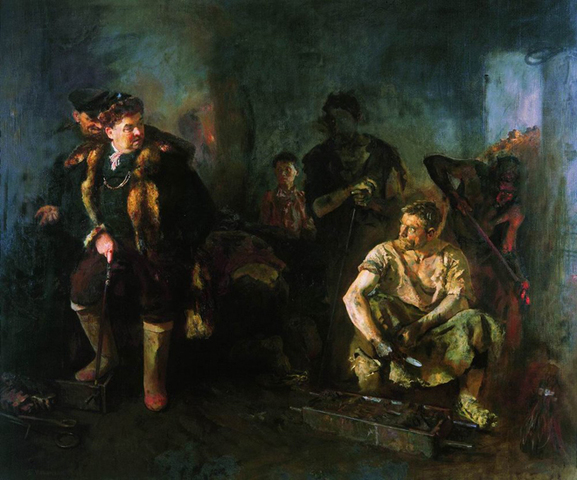
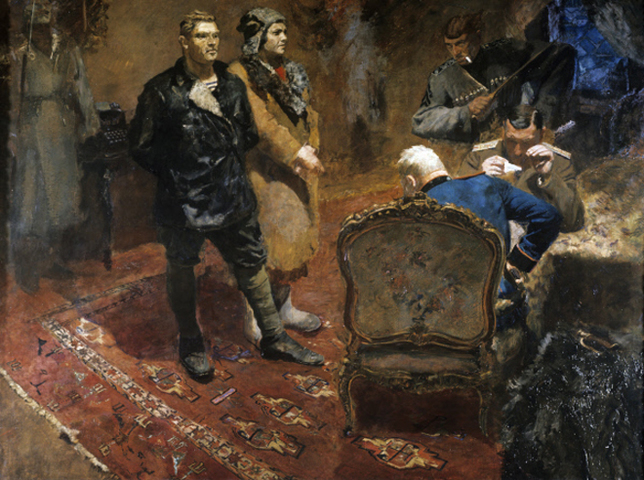
Theme paintings with historic and revolutionary subject matter interlocked with battle pieces and strictly historical paintings. The latter mostly began to appear after the Second World War, and their genre was similar to the already described glorification paintings full of operatic aesthetic. Alexander Bubnov’s Morning on Kulikovo Field, which portrays the Russian army before the battle with the Golden Horde is a good example. Glorification paintings could be based on relatively modern material as well. Take the two 1937 paintings under the name of Kolkhoz Celebration, one by Sergei Gerasimov, and the other by Arkady Plastov, with their depiction of triumphant abundance. Socialist Realism in general was in love with abundance – there had to be lots of everything, because abundance meant happiness, fullness, and the fulfilment of desires.
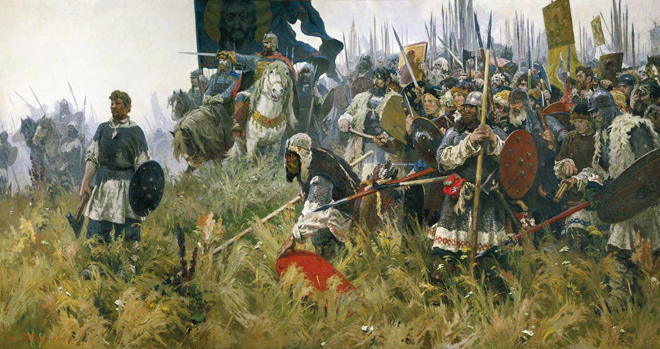
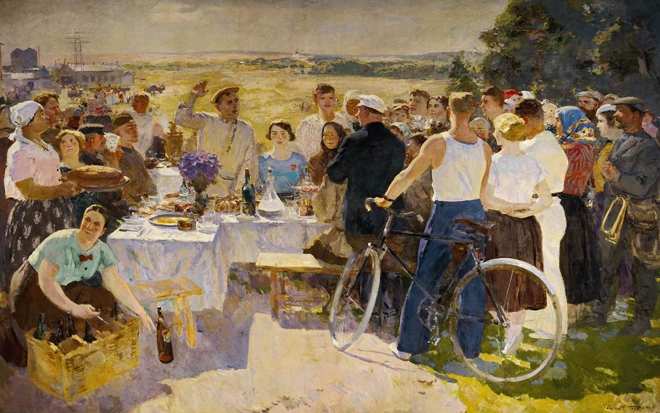
Scale was also important in Socialist Realism landscapes. Often, such paintings were panoramas of ‘Russian vistas’, as if the image of the whole country could be condensed into a single specific landscape. Fyodor Shurpin’s painting Morning of Our Motherland is an excellent example. Although here the landscape is just the backdrop for Stalin’s figure, the Soviet leader is invisibly present in many similar panoramas. Important too is the fact that the landscape compositions are oriented horizontally – there are no skyward verticals or dynamically active diagonals, only static horizons. This was an unchanging world, something already completed.
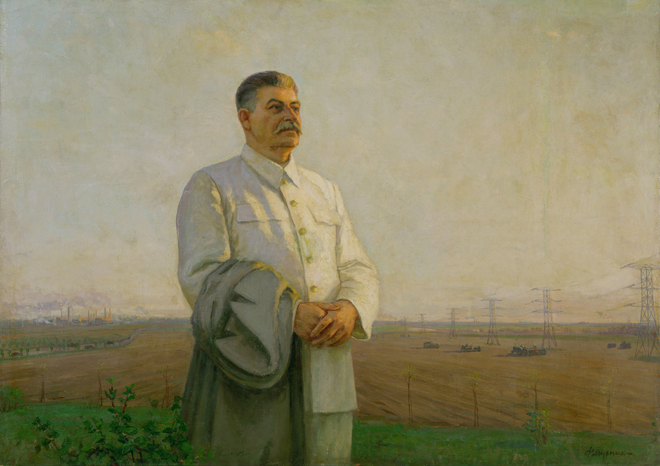
On the other hand, hyperbolic industrial landscapes featuring scenes of gigantic construction sites were also very popular. The Motherland was building metallurgical plants, hydroelectric power stations, factories, and much more. The love of giant structures and the pathos of quantity were also important features of Socialist Realism. It wasn’t enunciated explicitly, but could be seen and felt in the subjects of paintings and in the brush work used. The visual fabric became noticeably heavier and denser.
Incidentally, artists like former ‘Jack of Diamonds’ Aristarkh Lentulov, thrived on the depiction of industrial giants. The materiality inherent in their painting, came in very handy in this new situation.
This material vigour was also tangible in portraits, especially female ones. Not just in the manner of execution, but also in what surrounded the figures. The portraits were made against a backdrop of heavy fabrics – velvet, velour, furs, and all of it seemingly moth-eaten, with antique undertones. Such was Ioganson’s Portrait of the Actress Zerkalova. Ilya Mashkov painted a number of similar portraits, all of them quite elegant.
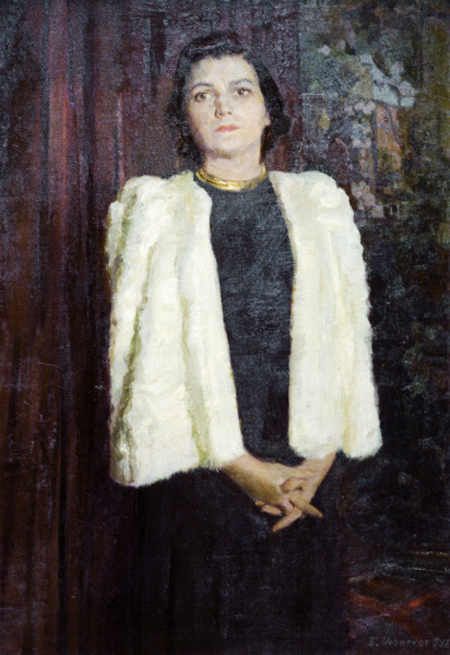
On the whole, portraits were seen in an almost Enlightenment way as a way of glorifying people of distinction, who had earned the right to be portrayed through their labours. Sometimes, these labours become a part of the portrait. Here we have the academic Pavlov, deep in thought in his lab, against a backdrop of biological research stations. Here’s the surgeon Yudin performing one of his operations. And here the sculptor Vera Mukhina moulding a statuette of Boreas. All of these portraits were painted by Mikhail Nesterov. In the 1880s and 90s, he had created his proprietary genre of the monastic idyll. This was followed by a long period of creative silence, broken in the 1930s when he suddenly became the principal Soviet portrait painter. He also taught Pavel Korin, whose portraits of the writer Maxim Gorky, actor Leonidov, or Marshall Zhukov are so grand as to resemble monuments.
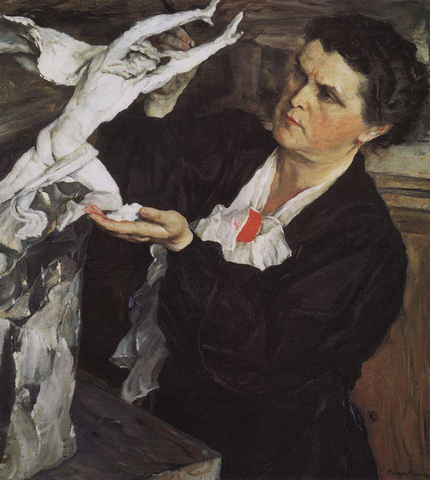
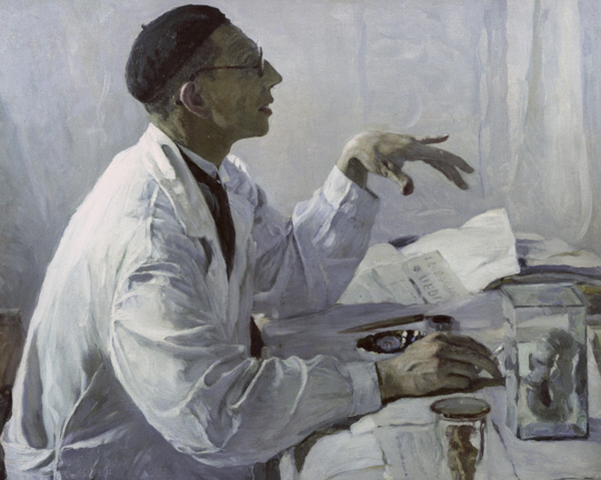
Even the still lives are characterised by monumentalism. They have epic names to boot, such as Mashkov’s Moscow Food or Soviet Breads. The former Jacks of Diamonds were always in the avant-garde when it came to rich depiction of the physical. In 1941, for example, Pyotr Konchalovsky painted Alexei Nikolayevich Tolstoy as My Guest – and the writer is sitting at a table laid out with ham, salmon, roast chicken, cucumbers, tomatoes, lemons, and shot glasses for various different drinks… But the tendency towards monumentalism is pervasive. Everything heavy and solid is welcome. The athletic bodies of Deyneka’s protagonists get heavier, gaining weight. The Female Metro Workers series by Alexander Samokhvalov and the paintings by other masters from the former Circle of Artists acquire the motif of the ‘generous figure’ – these are female deities of sorts, who personify the might of the earth and the power of creation. The painting itself is becoming heavier, more dense. But only to a certain degree.
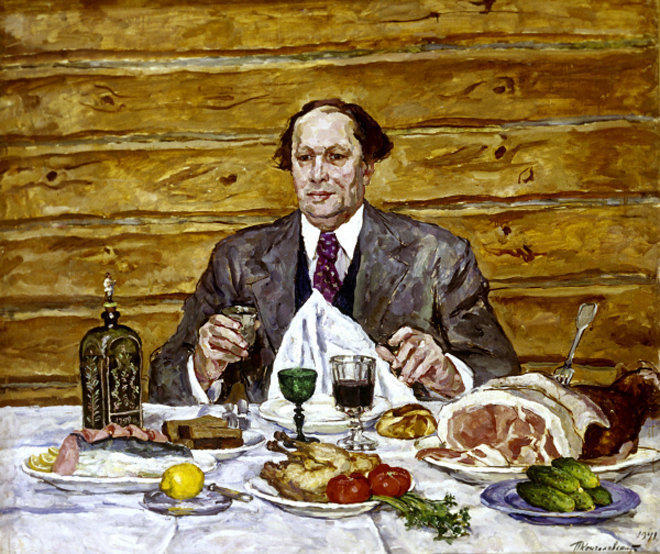
Because moderation was another important sign of this style. The brush stroke had to be noticeable, to signify the painter’s labour. If the texture was too smooth, the painter’s work was invisible. Looking at Deyneka’s work, for example, we see that he formerly operated in solid colour surfaces, but in the 1930s his paintings became more chiselled. On the other hand, excessive mastery wasn’t encouraged either, since that was immodest, and would mean making oneself too prominent. The words ‘standing out’ had a very sinister tone in the 1930s, when the fight against ‘formalism’ was raging in painting, children’s literature, music, and in everything else. It was supposedly a fight against improper influences, but in reality this was a fight against any style and any technique. Techniques cast doubt on an artist’s sincerity, while sincerity meant profound fusion of the self with the subject depicted. Sincerity precluded mediation, while techniques and influences were all about the artist acting as an intermediary.
Nonetheless, different methods existed for different objectives. For lyrical narrative, it was a good idea to use a certain colourless, ‘rainy’ Impressionism. This appeared in the works of Yuri Pimenov, in his earlier painting New Moscow that depicts a young woman riding a convertible through a city centre transformed by new buildings, and in his later series New Blocks, dedicated to the construction of suburban micro-districts. The same method was also used in the huge painting by Alexander Gerasimov entitled Stalin and Voroshilov Strolling in the Kremlin. The rainy atmosphere signified human warmth and candour. Obviously, such an Impressionist style could not be used to depict parades and celebrations, which still required very academic brush work.
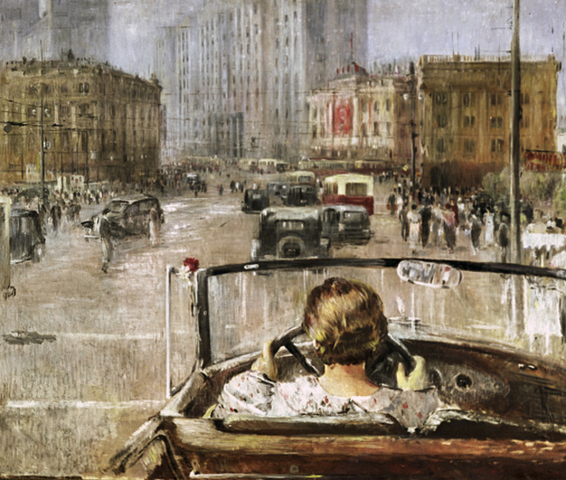
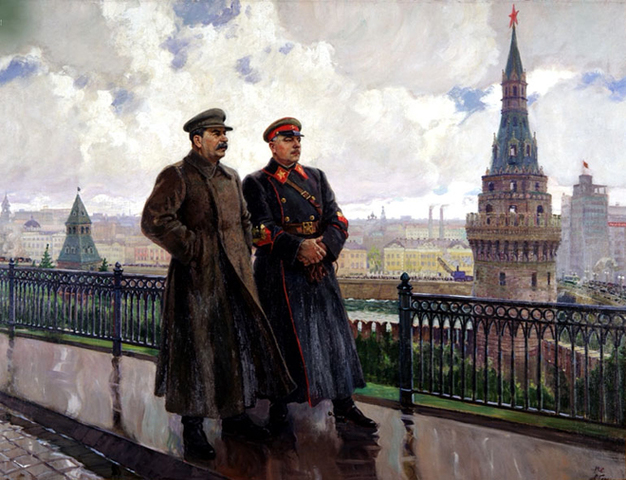
It has already been said that Socialist Realism had a certain futuristic vector; pressing forward to the future, to the results of revolutionary development. And since the victory of Socialism was inevitable, signs of the accomplished future could already be seen in the present. It was as if time had collapsed in Socialist Realism. The present is already the future, and that future is such that there will be no other future after it. History had reached its highest peak and stopped still. Deyneka’s Stakhanovites in white clothes are no longer humans, they are celestial beings. And they are not even looking at us, they are looking out into eternity, which in turn is already here, with us.
All of this acquired its final appearance in 1936–1938. This was the highest point of Socialist Realism, and Stalin became the canonical protagonist. His appearance in the paintings of Yefanov or Svarog or numerous others looked like a miracle – and it was the Biblical motif of miraculous appearance that had traditionally been connected to quite different protagonists. But that’s how genre memory functions. This was the moment when Socialist Realism really became a grand style, a style of totalitarian utopia, - though it was an already-accomplished utopia. And since the utopia was complete, the style was solidifying, becoming monumental and academic.
Every other kind of art, based on a different understanding of figurative values, became a forgotten, invisible, underground art. Though artists did find some niches in which to exist, to preserve and reproduce cultural skills. In 1935, the Academy of Architecture founded the Workshop of Monumental Painting, led by such old-school painters as Vladimir Favorsky, Lev Bruni, Konstantin Istomin, Sergei Romanovich, and Nikolai Chernyshev. But these sanctuaries never survived for long.
There’s a certain paradox here. In its oral declarations, totalitarian art was addressed to the people, and the words ‘human’ and ‘humanity’ can be found in all the Socialist Realism manifestos. But in reality, Socialist Realism partially pursued the messianic pathos of the Avant-Garde, with all its mythogenic pathetics, its apologia for the results, and its desire to transform the world, and there was no place left for the individual among all this pathos. At the same time, those quiet painters who didn’t write any declarations, but who defended the individual, the trivial, and the humane, were doomed to an invisible existence. It was in this underground art that humanity persisted.
The late Socialist Realism of the 1950s attempted to appropriate that humanity. Stalin, that consolidating figure of style, was no longer alive, and his former subordinates were totally at a loss. An entire era had come to an end. In the 1950s and 60s, Socialist Realism wanted to become Socialist Realism with a human face. The omens of this desired transformation had appeared even earlier and can be seen in Arkady Plastov’s paintings of village life, especially his work The Fascist Flew By about a senselessly killed shepherd boy.
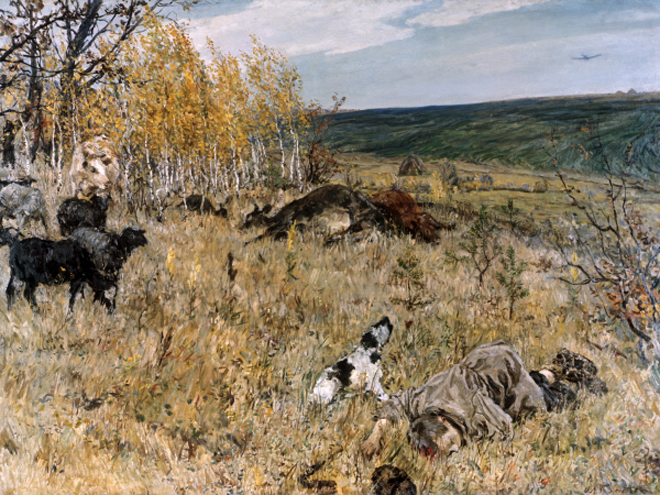
Most indicative of the new style, however, were the works of Fyodor Reshetnikov. Two in particular stand out. One is the painting Arrived for Vacation, depicting a young boy from the Suvorov Military School saluting his grandfather. The other is Another F, about a negligent student. A very touching detail in the latter is the reproduction of Arrived for Vacation hanging on the wall of the room. This was still Socialist Realism with a clear and detailed story, but the ideas of the state which had formed the foundation of all the earlier stories, were transformed here into ideas of family, with a change in tone. Socialist Realism had become intimate, focussing on the lives of ordinary people. The later paintings of Pimenov, and the works of Alexander Laktionov also fit within this new paradigm. Laktionov’s best known painting, Letter from the Front, which enjoyed mass circulation in postcard form, is one of the principal Soviet paintings. It has didacticism and sentimentality rolled into one, Socialist Realism, but in a petit-bourgeois style.
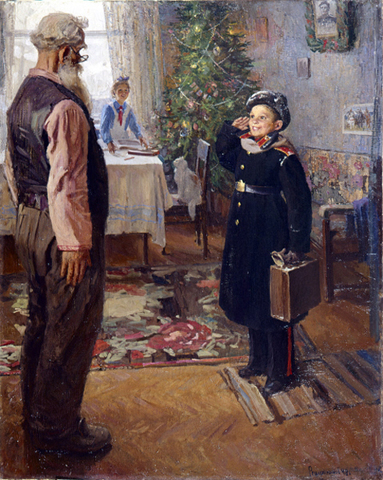
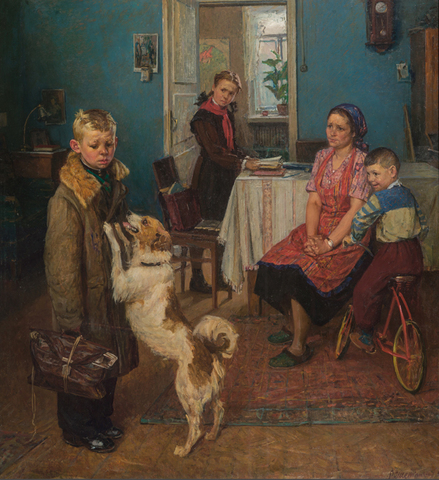
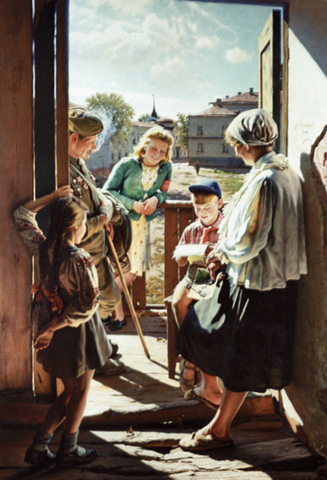
And this was the swan song of Socialist Realism. As a grand style it lived to see the collapse of the Soviet Union, and even survived that, but this wasn’t really living anymore, it was mere existence. In the 1960s, the totalitarian utopia was challenged by new styles and new artists, the artists of the underground, who would go on to reconsider the very question of what art is.



